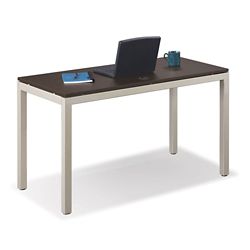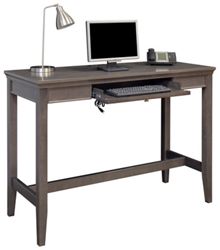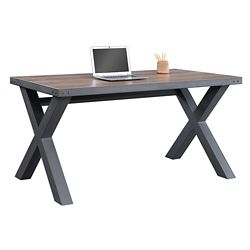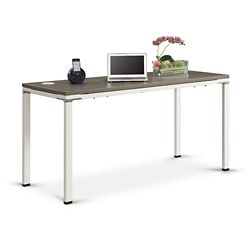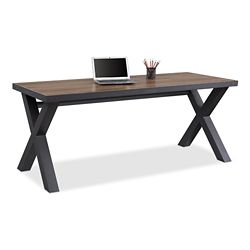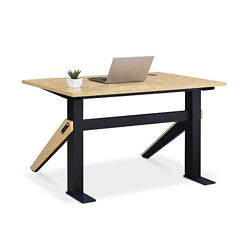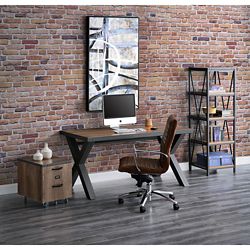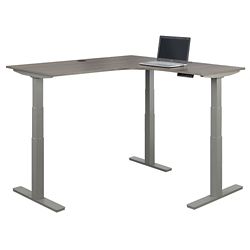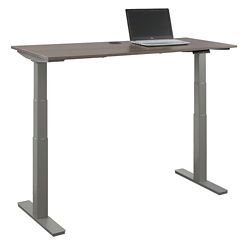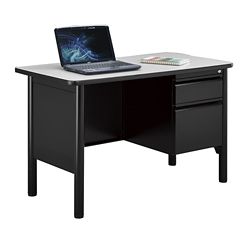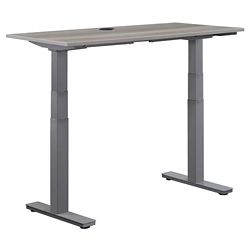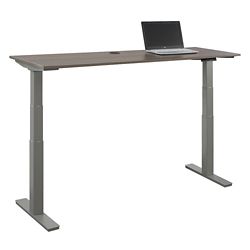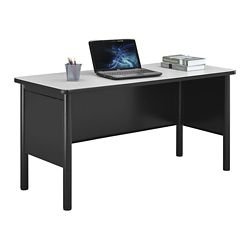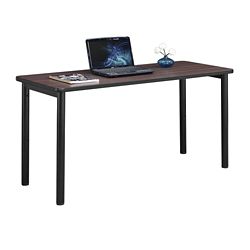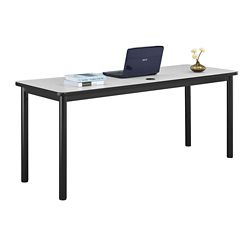Writing desks are perfect for the minimalist workstation. Writing desks have thin profiles to provide plenty of legroom and airy appeal, making them ideal for small spaces. If you need more privacy, you can also find writing tables with an attached modesty panel. We stock a wide selection of beautifully made writing desks that are built to last.
Writing desks are perfect for the minimalist workstation. Writing desks have thin profiles to provide plenty of legroom and airy appeal, making them ideal for small spaces. If you need more privacy, you can also find writing tables with an attached modesty panel. We stock a wide selection of beautifully made writing desks that are built to last.
Writing Desk Materials
-
Laminate writing desks: Because laminate is an engineered material, it can be constructed to withstand high levels of impact and consistent wear. There are different grades of laminate, with some more durable than others. High-performance laminate can be one of the best materials for corporate office settings because of its ability to withstand wear and tear.
-
Wood writing desks: Solid wood desks are as beautiful as they are timeless. They also come with a couple of drawbacks: They’re heavy, making them difficult to move, and they aren’t as durable as many performance office furniture materials. Because of this, wood writing desks are usually best used as a home office desk rather than in a commercial office setting.
-
Engineered wood writing desks: Engineered wood pairs affordability with durability. If you’re looking for the “solid wood” look but don’t want to pay the price tag that matches it, engineered wood can be an ideal alternative.
-
Metal writing desks: Metal is lightweight, affordable, and durable, making it a popular material for office desks, especially in modern silhouettes. You’ll most commonly see it incorporated in desks with mixed materials. For example, you might see a laminate or wood top paired with a metal frame.
Other Popular Desk Styles
-
L-shaped desk: L-shaped desks are made of 2 parts—a desk and a return. The main desk is typically larger. The return is the smaller, often more narrow side, designed to be used as an additional workspace.
-
Standing desk: Standing desks, or adjustable-height standing desks, allow users to move between working in standing or seated positions.
-
Executive desk: Executive desks are large desks that usually come with 2 pedestals (filled storage cabinets, filing, or drawers) on either side.
-
Compact desk: Compact desks are designed for small spaces. You can find compact writing desks, L-shaped desks, and compact U-shaped desks, providing you with work surface options even when square footage is a challenge.
-
Corner desk: Corner desks are designed for use in the corner of a room. They differ from L-shaped desks in that the desk has a rounded surface in the corner. However, many people use the terms “L-shaped desk” and “corner desk” interchangeably.
How to Measure for an Office Desk
Measure the size of your office to determine how large of a desk will be possible within the space. When measuring the square footage of the area where you’d like to put your desk, allow at least 2 feet of space around it.
How to Measure for Office Desk Delivery
Measure doorways and stairwells to ensure the desk will make it into your office. If you need to navigate slender doorways or narrow stairwells on the way to your room of choice, then you may want to consider getting a smaller desk or one that comes ready to assemble (RTA) to make sure that it will fit.
Need Help? We Offer Design Services
NBF is proud to offer complimentary design services. You can work with our office design pros to create the office space of your dreams.
We’re Here to Help
Still struggling? Our furniture experts are standing by, waiting to help you find the best office chair for your needs. We’re dogmatic about customer service, so you can trust us to walk with you every step of the way on your office furnishing journey.


